Journey to Agra – Pietra Dura
PRIMITIVE - Thursday, September 17, 2015
By Misaki Imagawa
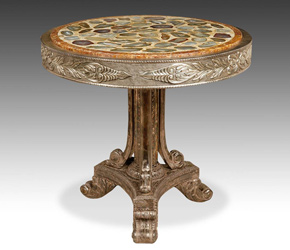 |
|
Take a trip through time and space. Beyond the red sandstone walls of the Taj Mahal in Agra, India, lies the sprawling town of Taj Ganj. Its winding streets are narrow, a holdover from the past, but in the present day they are flanked by tourist shops, an indicator of the town’s unchanging appeal. As you walk along, vendors call out from beneath slanted awnings offering drinks, food and souvenirs; but as you begin to think about the past their voices slowly fade away. The asphalt beneath your feet turns to packed earth. Dust is kicked up by the boots of British uniformed officers and men and women in traditional dress. There are no cars; no honking, only small horses making their way between convoys of people carrying baskets on their heads and side stepping the droppings of sacred cows. Yet, there is still vitality to this place. Everything seems to be moving with intention.
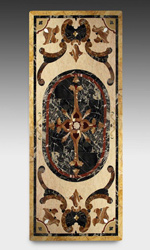 |
|
As you walk further, brick buildings dissolve from sight and rows of mud houses appear, roofed with thatch and cane. You choose one and look inside. You see robed workmen tinkering with the tools of their trade under dappled sunlight. Most are hunched over round, thin wheels propped between wooden supports. Intrigued, you look closer; with one hand they use sticks to rapidly spin the wheel while the other holds a tiny colored piece of some sort of gemstone against the wheel, which acts as an emery. In front of them lies a string of colored cut stones that create a floral pattern when pieced together. You're certain you've seen this pattern before – somewhere. Then you remember – the Taj Mahal! Shah Jahan, the emperor, has commissioned these workers to build his monument to love, the mausoleum for his wife. It is the only industry of the town. These inlay designs are headed to the Taj Mahal, soon to decorate its archways, ceilings and walls! As you snap back to the present day, you wonder if these workers knew their creations would be admired for hundreds of years to come?
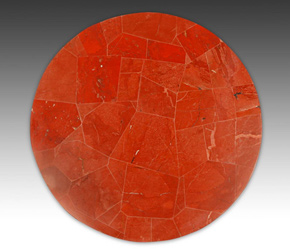 |
|
The inlay technique pietra dura, means 'hard rock' in Latin. It is actually an inlay technique developed by the ancient Romans that was revived in the 16th century, reaching what many consider its creative peak in Florence. It has often been referred to as 'paintings in stone.' Precious and semiprecious stones were cut and fitted into precise grooves, at times creating scenery so detailed and seamless that they looked like oil paintings from afar. By the early 17th century, transportable examples of these artworks reached the Middle East and the Indian subcontinent as trade goods and gifts. Mughal artisans then mastered the technique and transformed it into something uniquely Indian, ultimately immortalizing it on the walls of the Taj Mahal.
An estimated 20,000 workers were employed to construct the Taj Mahal and many eventually made Agra and Taj Ganj their home. Among them were the pietra dura artisans who continued to create inlay artworks and passed down their skills to their sons and grandsons. To this day, the pietra dura craftsmen of Agra are the direct descendents of the artists who created the awe-inspiring inlay works of the Taj Mahal.
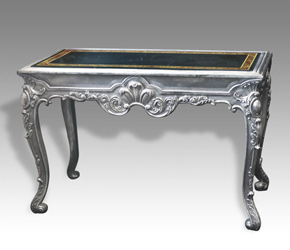 |
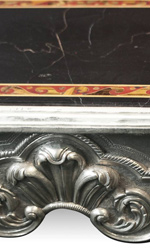 |
||
In India, pietra dura is called parchin kari and it now has a well deserved reputation as one of the country's greatest art forms. The tools and techniques today’s artists use are largely unchanged from those of the 1600s. From simple designs sold in tourist stores to one-of-a-kind custom designed and commissioned panels and tabletops – such as those in PRIMITIVE's collection – these inlay works are broadly appreciated worldwide. Stones are carefully picked for their color and value, and include agate, malachite, carnelian, lapis lazuli, onyx, turquoise and mother of pearl. Great attention to detail goes into the composition of finely executed pietra dura; sometimes a single flower may be composed of a hundred individual pieces. It goes without saying – tremendous skill and patience is required to file down a stone to the size of a crumb or the thinness of a needle.
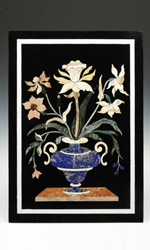 |
|
The art of pietra dura is more than just a pleasing array of inlaid stones developed in ancient times – it has become part of Indian heritage and one of India’s most important art forms. Fourteen generations have passed since artisans first adorned the marble walls of the Taj Mahal in the 17th century. Young sons have grown up at the knees of their fathers, watching their nimble hands and refined sensibilities at work. All through the decline of the Mughal Empire and the rise of the British Raj, rebellion, war and independence, this art has survived and developed in a beautiful, untainted, awe-inspiring way. It has become nothing less than gems marking the footsteps of India's history.
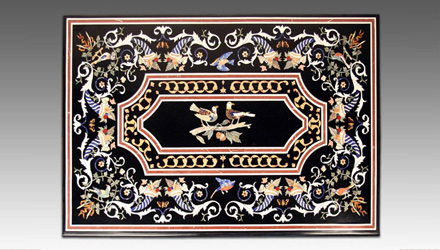 |
Download this Article: Journey to Agra.pdf